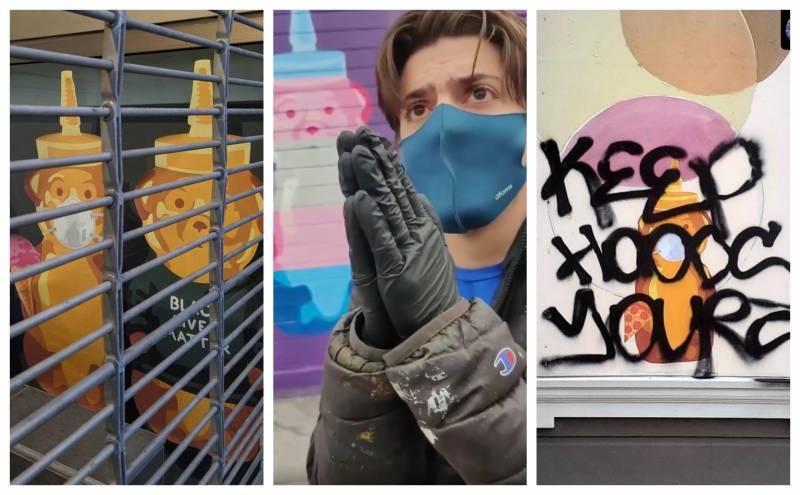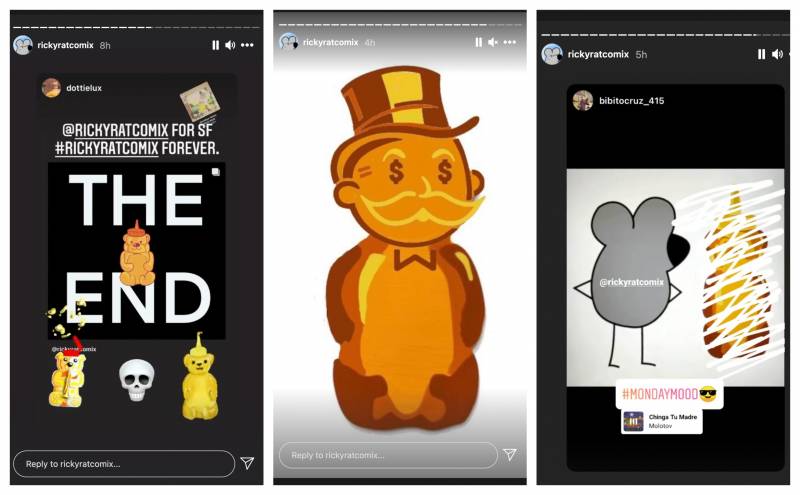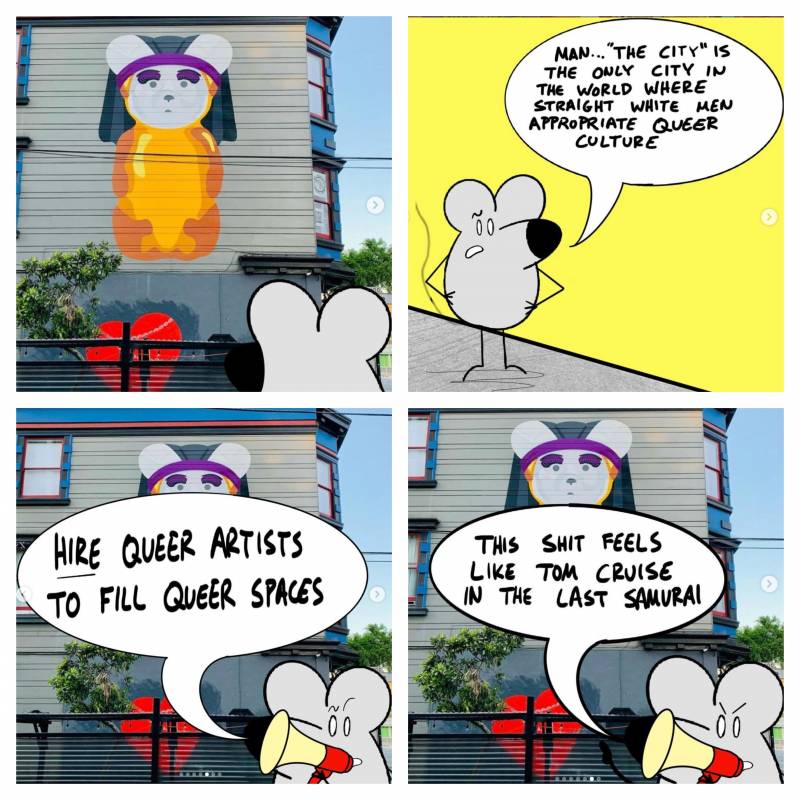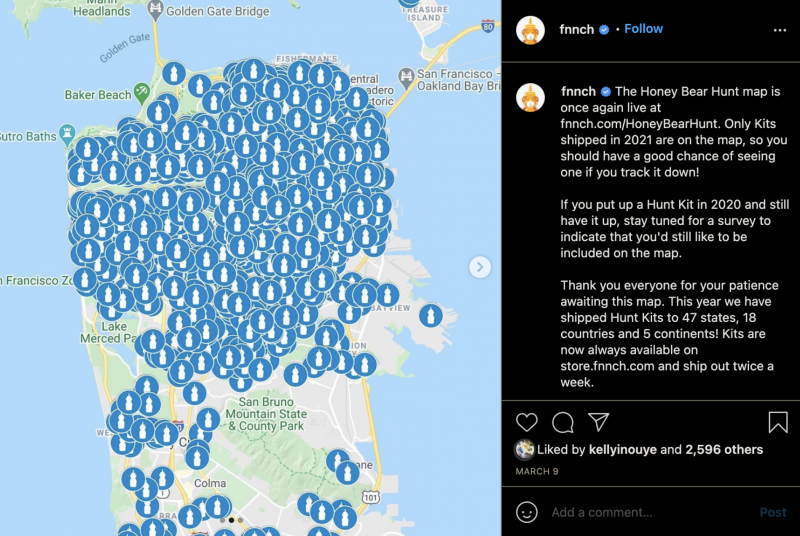In the summer of 2018, I put together a guide to six prolific muralists in San Francisco, including maps of where to find their work. The idea was to create city walks that doubled as art treasure hunts, and to encourage people to learn more about some of our most visible local artists. The list included Jeremy Fish, Sirron Norris, Few and Far Women, Sam Flores, APEXER and—try not to hate me—fnnch, the artist behind all those honey bears plastered everywhere in San Francisco.
At the time, fnnch was as well known for his poppies, dogs and bright lips as he was for his honey bears. And at the time, I described his artistic contributions to the city as the “most Instagram-able” on the list, adding that each of his public pieces made the city “a more cheerful place to be.”
Almost three years later, I cannot, in good conscience, say the same thing. In the past 12 months, San Francisco has become so oversaturated with fnnch’s honey bears that what was once an occasional sugar rush now feels like a nausea-inducing force-feeding. And I’m not alone: the backlash, brewing since last summer, finally reached its zenith this month. There’s a new (private) Instagram account, @fuckfnnch, that celebrates “pics or videos of dissed or ripped bears.” There’s a Change.org petition titled “Remove fnnch mural from SF LGBT Center.” And, notably, there are the local artists who’ve been confronting fnnch on walls, in person and online.





